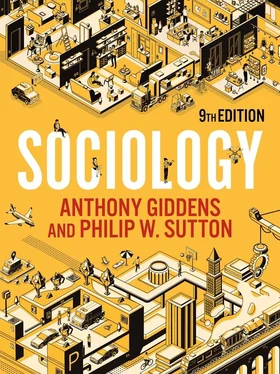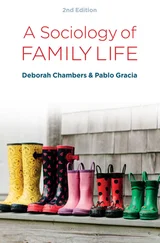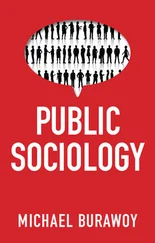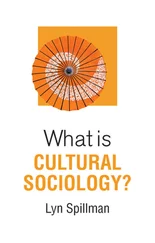However, digitization also opens up the potential for interventions in social life to bring about change. Marres (2017: 7–10) reports on one such example, that of the Samaritan Radar, a social media app developed to try to identify social media users who may be at risk of suicide. The app enabled real-time monitoring and analysis of Twitter messages, alerting followers of those thought to be at risk and offering advice on how they should provide support. Such interventionist potential could suggest that the longrejected nineteenth-century positivist ideal of science being able to predict and shape human behaviour may make a digital-age return. But, before we run away with this idea, it is important to rehearse some criticisms of the recent digital turn in sociology.
First, it is not correct to suggest that sociology has only very recently come to see digital methods as potentially useful. Computing has been a staple of sociological analysis since at least the 1960s, as anyone who has used the standard software packages SPSS and NVivo, for quantitative and qualitative analysis respectively, will attest. The novelty of digital technology as research tools should not be overstated. On the other hand, digitization is clearly influencing conventional methods, even fieldwork, some of which can be conducted online with particular groups.
Second, the claim that digital data are ‘naturally occurring’ has been challenged. The algorithms used by major search engines, such as Google, are created by company workers, and digital data are the products of human activity. Lupton (2015: 8) argues that ‘Human judgement steps in at each stage of the production of data: in deciding what constitutes data; what data are important to collect and aggregate; how they should be classified and organized into hierarchies; whether they are “clean” or “dirty” …; and so on.’ Similarly, rather than being just ‘raw data’ waiting to be analysed, digital data are just as likely to tell us something about the devices and systems involved as they do about the behaviour of people who use them. Marres (2017: 22) says that, ‘if a particular app is frequently downloaded by a particular group of users, does that tell us something about those users, or does it rather tell us something about the auto-suggest and rankings of apps on the platforms they use?’ Hence, we should be cautious about the uncritical use of digital data in social research.
Third, digital sociology, like all sociological research, is likely to raise ethical issues of confidentiality, privacy and the legitimate collection and use of data. The Samaritan Radar app is one example. The app was shut down following criticism that, in informing followers without the consent of the account holder, it risked stigmatizing people and constituted an invasion of privacy. Yet the very concept of privacy may need to be rethought, given the ubiquity of sharing within social media and widespread dataveillance – the systematic monitoring and use of data relating to people’s online activity. A survey by the Wellcome Trust (2013) in the UK suggests that people were broadly positive towards monitoring and use of online data in government crime-prevention work, for reasons of national security and in improving government services, but concerns were expressed about data theft, hacking, targeted advertising and possible invasions of privacy. Given that online research can be conducted anonymously and without any face-to-face contact, it may be that issues of privacy, confidentiality and risk will need to be reconsidered by the bodies that govern research practice in professional sociology.
The sub-field of digital sociology is very recent, with its origins under this label being traceable to early work from 2009 and 2010. And though research in this field continues apace, foundational issues around what it should cover and what methods are appropriate to it also currently remain unresolved. Are existing research methods capable of understanding social life today, or should sociologists use digital technologies to develop novel methods that are better able to tell us about social life in the digital age? The answer to this question has implications not just for digital sociology but for the future practice of sociology as such.
What kind of useful information can sociologists really gather from social media? How might this help us to establish the extent of gender inequality or support for political parties? Could it give us better insights into why people support particular political parties or how knowledgeable people are about gender inequality?
Triangulation and mixing methods
All research methods have advantages and limitations, and recognition of this means that it is commonplace today to find sociologists combining methods in a single piece of research, using each to supplement and check on the others. This process is known as triangulation. Advocates of triangulation argue that it produces more reliable, valid and comprehensive knowledge than a single research method, though Denzin (1970) actually distinguished four types of triangulation. Data triangulation occurs when data are collected at different times and perhaps uses different sampling strategies within the same research project. Investigator triangulation is where a team of researchers, rather than a single researcher, carries out the fieldwork. Theoretical triangulation is more controversial, as it involves using several theoretical approaches when interpreting the data. Finally, methodological triangulation is the adoption of more than one methodology as part of a research study. We can see the potential value of combining methods – and, more generally, the problems and pitfalls of real sociological research – by looking once again at Laud Humphreys’ Tearoom Trade .
One of the questions Humphreys wanted to answer was ‘What kind of men use the tearooms?’ It was very hard for him to find this out because all he could really do was observe. The norm of silence made it difficult to ask questions or even to talk, and it would have been very odd if he had asked personal questions of the participants. As we have seen, Humphreys noted the car number-plates of people involved, giving the numbers to a friend at the Department of Motor Vehicles, who secured the owners’ addresses. Some months later, he persuaded a work colleague at Washington University in St Louis, who was conducting a door-to-door survey of sexual habits, to add the names and addresses of his own tearoom sample. Disguised as an investigator, Humphreys interviewed the men in their homes to learn more about their backgrounds and lives, interviewing wives and family members too.
Leaving aside the unconventional and ethically dubious tactics he employed, Humphreys was engaging in a form of methodological triangulation. He tried to overcome the limitations of participant observation by joining a social survey and, by combining the results, was able to produce a richer, more detailed and powerful piece of research. Mixing methods has become common today for precisely this reason. However, it is not a panacea and is certainly not accepted or adopted by all.
The influence of sociology
Because sociologists often study things about which most people have some personal experience, it is possible to believe that sociological knowledge is merely a restatement, in abstract jargon, of things we already know. Yet very rarely is this the case. Because sociological findings must be rooted in evidence they are never just personal opinion or speculation. In fact, good sociology sharpens our understanding of things that appear obvious or completely transforms our common-sense perspective (Berger 1963). In either event, sociology is neither tedious nor a restatement of the obvious. Sociological research has allowed us to see aspects of society about which we had no previous knowledge, and research findings often challenge our personal beliefs and prejudices about social groups, individuals and institutions.
Читать дальше












